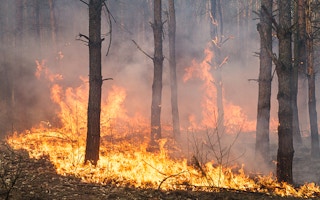Communities in both Europe and the US are preparing to fight fire not with fire, but with information.
European researchers have just established a map of the regions most at riskfrom catastrophic wildfire. And in the US, where 2015 saw more fire damage than any other year on record, a new Wildland Fire Science Centre in Reno, Nevada, hopes to help federal, state and local agencies confront and better prepare for the hazards.
The reasoning on both continents is the same. “In the regions we have identified as high risk, local authorities need to prioritise fire risk control and develop better forest fire risk management strategies,” says Heiko Balzter, director of the Centre for Landscape and Climate Research at the University of Leicester, UK.
Broad expertise
And Hans Moosmüller, director of the new science centre at the Desert Research Institute in Nevada, says: “Fire science is inherently interdisciplinary.
“Combining our broad expertise in operational fire support, fire emissions, fire ecology and fire hydrology was a logical step to gain a holistic understanding of what is causing more extreme fires, what is happening during and after the fire, and the catastrophic effects we are seeing on our environment and our communities.”
Researchers have repeatedly warned that global warming and climate change is likely to be accompanied by extremes of heat, drought and ever-greater risk of wildfire, and that national and regional agencies need to think of new approaches to an increasing hazard.
Statistics from the National Interagency Co-ordination Centre show that, in 2015, the US Forest Service spent $1.7bn – more than half its annual budget – simply on fighting fires.
Wildfire destroyed more than 2,600 US homes, scorched more than 4 million hectares of land, and almost certainly indirectly claimed lives. Inhalation from wildfire smoke is believed to contribute to 340,000 deaths worldwide each year.
Southern Europe was hit by dramatic fires in 2015, and the new European map, its authors report in the Journal of Environmental Management, has identified what the scientists call the “wildland-urban interface” areas that are most at risk.
In a survey that covers the entire European Union, as well as non-EU nations such as Switzerland, Norway, Iceland, Turkey and the Balkan states of Montenegro, Macedonia, Bosnia and Herzegovina, and Kosovo, the data confirm that catastrophic large wildfires are more likely in Southern Europe and the Mediterranean.
Buffer zones
And out-of-control blazes become more likely in the 5km buffer zones where wildland and cities meet. They are also a hazard in tourist zones such as Sardinia, Provence and the Côte d’Azur, or in regions with big cities, such as Madrid, Catalonia and Valencia.
Some of the hazards have intensified because – for economic reasons – farmers have abandoned land, and wild shrubs adapted to fire have encroached. But tourist pressure and urban sprawl have added to the problem.
“Wise land management can provide a valuable ecosystem service of fire risk reduction that is currently not explicitly included in ecosystem service evaluations,” says Pasquale Borrelli ,a specialist in wind soil erosion at the EU’s Joint Research Centre in Ispra, Italy, and one of the report’s co-authors.
“The results re-emphasise the importance of including this ecosystem service in landscape evaluations to account for the significant landscape function of reducing the risk of catastrophic large fires.”










